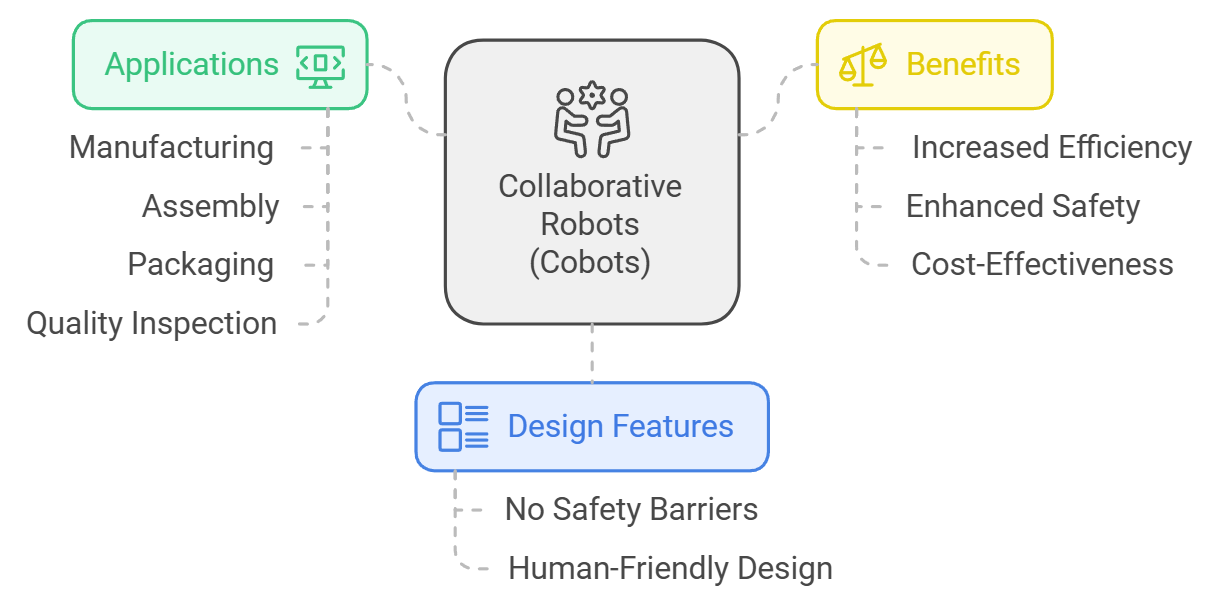Collaborative Robots (Cobots)
Designed to work alongside humans in a shared workspace, without the need for safety barriers. They are often used in manufacturing for tasks such as assembly, packaging, and quality inspection.

Collaborative robots, often referred to as cobots, are industrial robots specifically designed to aid human workers in production tasks. These machines have numerous benefits including mobility & versatility for multiple functions. They are lightweight, simple to operate and switch tasks, plus they can be programmed for new operations.
Cobots come in several types to meet various production and manufacturing needs. They integrate effortlessly into production systems with a range of tools such as welding tips, vision cameras, suction cup grippers, etc.
Below are some common applications of collaborative robots:
Assembly: Cobots can handle tasks like small parts assembly, electronic component assembly, as well as product packaging.
Machine Tending: Useful for loading and unloading parts from machines (like CNC machines or 3D printers), thereby enhancing production efficiency.
Quality Inspection: Equipped with vision systems, cobots conduct inspections to ensure product quality & uniformity.
Pick and Place: In logistics and warehousing, these robots manage repetitive pick-and-place duties—sorting items and placing them in their designated spots.
Material Handling: Capable of moving materials between processes, cobots support logistics & inventory management.
Collaborative Assembly: Working alongside human operators, cobots assist with complex assembly tasks—boosting both productivity and precision.
In summary,collaborative robots serve as versatile toolsthat help streamline various processes,improve efficiency & enhance workplace safety.